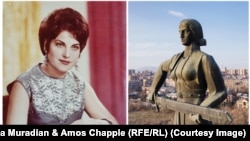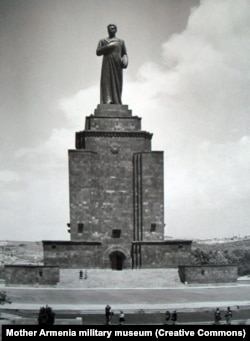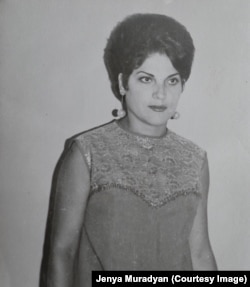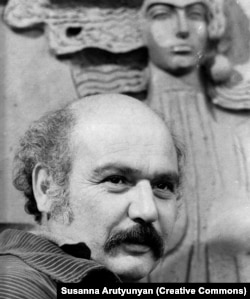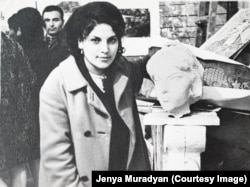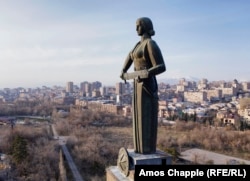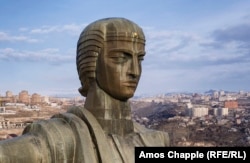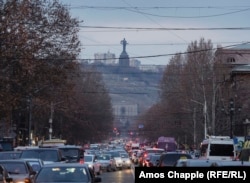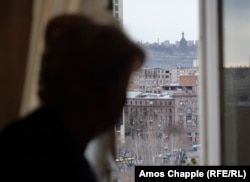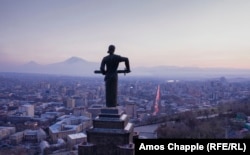In the autumn of 1960, Yerevan local Genya Muradian and her mother headed out for a shopping trip in central Yerevan that would change the face of their city.
As the two women waited in line to pay for a bag of tomatoes, Muradian noticed a mustachioed man staring at her with such intensity that the frightened teenager pointed him out to her mother. Her mother then placed the tomatoes back on their tray and strode out of the store, gripping the hand of her strikingly beautiful daughter.
Outside on the street, the man approached the two, apologized, and explained himself.
The man’s name was Ara Harutyunyan and he had recently been commissioned to create a sculptural epic that would replace Yerevan’s Stalin monument. The artist was looking for a woman who could visually represent the power of motherhood and the "Armenian motherland" and in Genya Muradian he believed he had found exactly that archetype.
Sixty-one years after that encounter, the 78 year-old Muradian, who today lives in a central Yerevan apartment, explained what happened after the strange encounter.
"My mother immediately refused. Then the sculptor said, 'OK. Well, if you change your mind, here's my phone number.'"
When Muradian's brother heard about the marketplace encounter, he excitedly intervened. Harutyunyan, the famous artist his sister had met, was his lecturer at the Terlemezyan College of Fine Arts.
Together, brother and sister then visited Harutyunyan's studio and Muradian posed, standing with a hand on her waist, for the first of four or five sessions with the artist. Muradian says she is not sure about the material used, but thinks the artist shaped her likeness from clay.
Muradian says the artist was "not at all talkative" and during the posing sessions his concentration "was so intense that it was a little unsettling. When he looked at you, it felt as if he was seeing inside of you."
In 1967, the monument sculpted in Muradian's image was formally unveiled. But for 40 years, Muradian kept the fact that she was the model for the beloved statue a family secret, not telling even her own husband.
Muradian says when she saw the huge monument unveiled she asked the sculptor why she had been given a single, stern eyebrow. The artist told Muradian he took some creative license because "it's the symbol of a strong woman, and that's the strength I see in you."
Muradian, who worked as a Russian-language teacher, says the monument helped her through some of the immensely difficult periods of her life, in part because of what the artist told her.
The retired teacher says the sculptor "said he saw power in me, but I didn't feel it. I felt weak and easy to convince.... But I was chosen as an image of strength, so looking up at the monument reminded me that I needed to be just as strong. That helped give me the courage I needed through my life."
Today, Muradian checks in on the monument from her apartment on most days "as if on a family member" and watches with pleasure the different techniques used to illuminate the hilltop figure on national holidays. Muradian says it is upsetting to see the statue not being cleaned or cared for in the same way many other Yerevan monuments are maintained.
The monument poses a towering logistical challenge for cleaning crews.
During the recent conflict with Azerbaijan, Muradian says she felt "physical pain" as the news was unfolding and she watched mothers mourning their children.
Muradian says she understands why many young Armenians are leaving their country but hopes more can seek to "create prosperity in the homeland" rather than departing for a life abroad.
